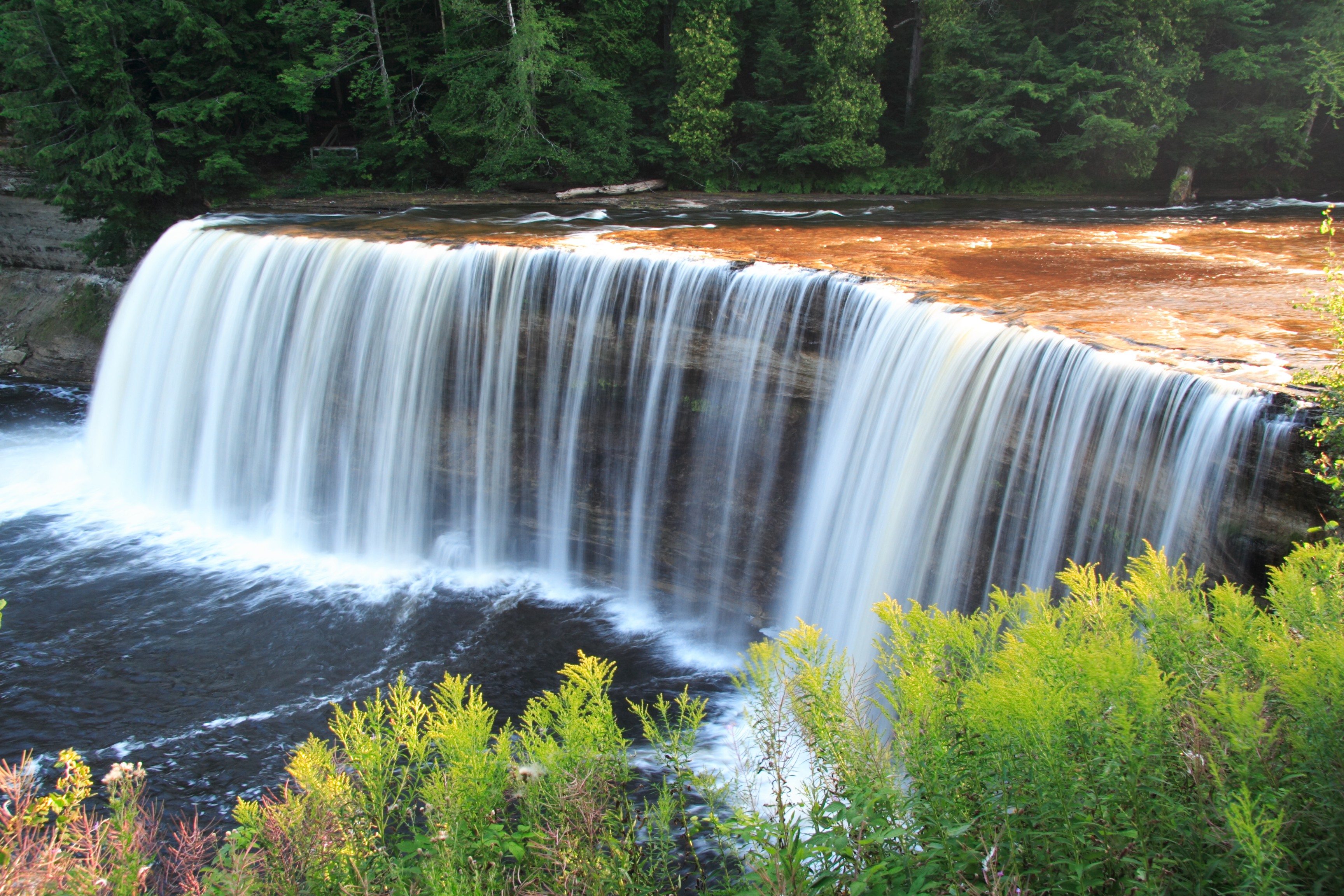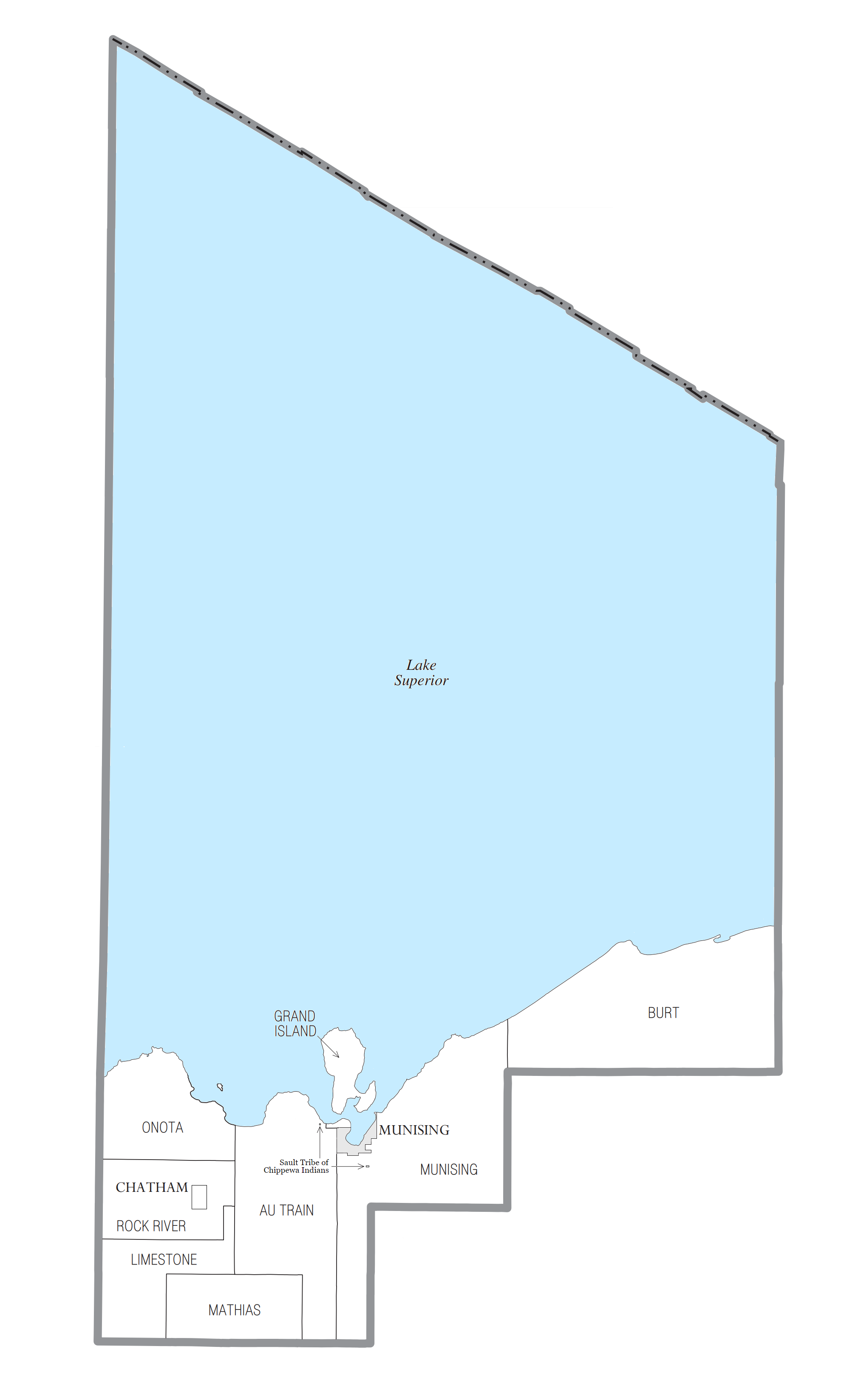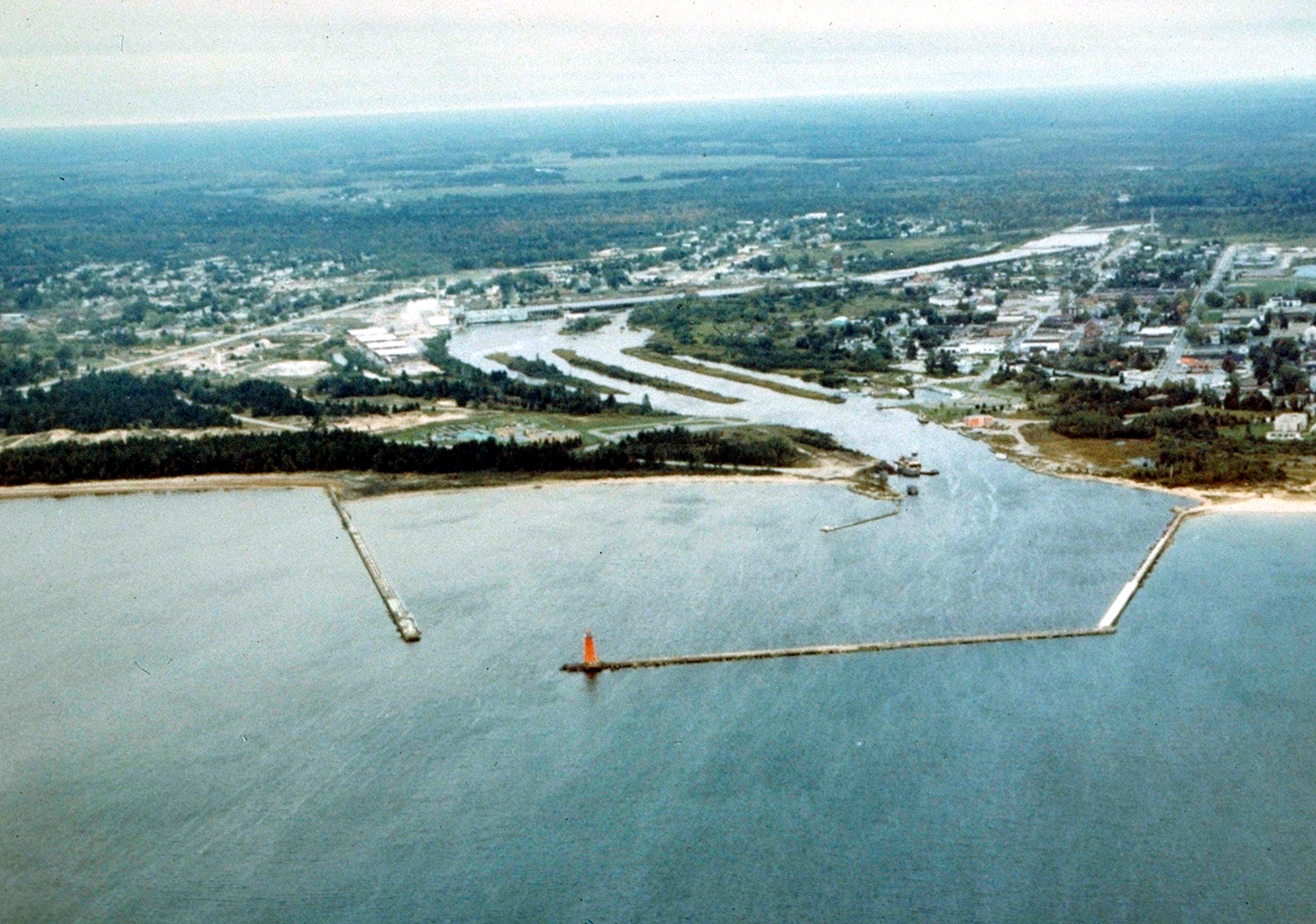|
West Branch Manistique River
West Branch Manistique River is a river in the Upper Peninsula of the U.S. state of Michigan. It rises in Alger County, flows southeast into Schoolcraft County, and discharges into the Manistique River. Its principal tributary is the Creighton River. Much of the river's course flows through wetlands that are a part of the Lake Superior State Forest, a semi-protected land area. Despite the name of the state forest, the waters of the West Branch ultimately flow into Lake Michigan. Description The West Branch Manistique River flows through a large field of clay wetlands, known as the ''Great Manistique Swamp'', for almost its entire length. Its source is a network of perched wetlands near Melstrand in eastern Alger County. The river's watershed is little served by paved roads, as the region is of minimal economic value and has almost nobody living in it. After flowing underneath the Seney Stretch of Michigan highway M-28, the river continues southeast, curling and winding throughou ... [...More Info...] [...Related Items...] OR: [Wikipedia] [Google] [Baidu] |
Upper Peninsula Of Michigan
The Upper Peninsula of Michigan – also known as Upper Michigan or colloquially the U.P. – is the northern and more elevated of the two major landmasses that make up the U.S. state of Michigan; it is separated from the Lower Peninsula by the Straits of Mackinac. It is bounded primarily by Lake Superior to the north, separated from the Canadian province of Ontario at the east end by the St. Marys River, and flanked by Lake Huron and Lake Michigan along much of its south. Although the peninsula extends as a geographic feature into the state of Wisconsin, the state boundary follows the Montreal and Menominee rivers and a line connecting them. First inhabited by Algonquian-speaking native American tribes, the area was explored by French colonists, then occupied by British forces, before being ceded to the newly established United States in the late 18th century. After being assigned to various territorial jurisdictions, it was granted to the newly formed state of Michigan as ... [...More Info...] [...Related Items...] OR: [Wikipedia] [Google] [Baidu] |
Michigan
Michigan () is a state in the Great Lakes region of the upper Midwestern United States. With a population of nearly 10.12 million and an area of nearly , Michigan is the 10th-largest state by population, the 11th-largest by area, and the largest by area east of the Mississippi River.''i.e.'', including water that is part of state territory. Georgia is the largest state by land area alone east of the Mississippi and Michigan the second-largest. Its capital is Lansing, and its largest city is Detroit. Metro Detroit is among the nation's most populous and largest metropolitan economies. Its name derives from a gallicized variant of the original Ojibwe word (), meaning "large water" or "large lake". Michigan consists of two peninsulas. The Lower Peninsula resembles the shape of a mitten, and comprises a majority of the state's land area. The Upper Peninsula (often called "the U.P.") is separated from the Lower Peninsula by the Straits of Mackinac, a channel that joins Lak ... [...More Info...] [...Related Items...] OR: [Wikipedia] [Google] [Baidu] |
Alger County, Michigan
Alger County ( ) is a county in the Upper Peninsula of the U.S. state of Michigan. As of the 2020 Census, the population was 8,842. Its county seat is Munising. The Pictured Rocks National Lakeshore is located within the county. History Alger County was detached from Schoolcraft County, set off and organized in 1885. The county was named for lumber baron Russell Alexander Alger, who was elected as a Michigan Governor, and US Senator, and appointed as US Secretary of War during the William McKinley Presidential administration. ''See also'', List of Michigan county name etymologies, List of Michigan counties, and List of abolished U.S. counties. Geography According to the U.S. Census Bureau, the county has a total area of , of which is land and (82%) is water. It is the second-largest county in Michigan by total area, mainly because of Lake Superior on the north side of the county. Highways * * * * * * * * * * * * * * , passes through Pictured Rocks National ... [...More Info...] [...Related Items...] OR: [Wikipedia] [Google] [Baidu] |
Schoolcraft County, Michigan
Schoolcraft County ( ) is a county located in the Upper Peninsula of the U.S. state of Michigan. As of the 2020 Census, the population was 8,047, making it Michigan's fourth-least populous county. The county seat is Manistique, which lies along the northern shore of Lake Michigan. The county is named in honor of Henry Schoolcraft, who explored the area with the expedition of Lewis Cass. The county was founded in 1843 and organized in 1876. The county is largely rural and forested, with much of its western portion within Hiawatha National Forest. Geography According to the U.S. Census Bureau, the county has a total area of , of which is land and (38%) is water. Major highways * – runs east and NE across south edge of county. Passes Cooks, Manistique, Gulliver, Parkington, Blaney Park. * – runs east–west across upper middle part of county. Passes Seney. * – enters county near NE corner. Runs south past Seney to intersection with US2 near Blaney Park. * – enters ... [...More Info...] [...Related Items...] OR: [Wikipedia] [Google] [Baidu] |
Manistique River
The Manistique River ( ') is a U.S. Geological Survey. National Hydrography Dataset high-resolution flowline dataThe National Map, accessed December 19, 2011 river in the U.S. state of Michigan that winds southward through the central Upper Peninsula from its headwaters near Lake Superior to its mouth in Lake Michigan. It drains approximately of the Upper Peninsula, including most of Schoolcraft County and small portions of Alger County, Delta County, Luce County, and Mackinac County. The river rises at the outlet of Manistique Lake in the southwest corner of Luce County, and after flowing through the Seney National Wildlife Refuge, empties into Lake Michigan at Manistique, Michigan. M-77, a north–south highway, serves much of the Manistique River's drainage and crosses the river and its tributaries several times. Boreal forest wetlands The drainage of the Manistique River is very flat and sandy. The river is not characterized by rapids or waterfalls. Instead, it wriggl ... [...More Info...] [...Related Items...] OR: [Wikipedia] [Google] [Baidu] |
Creighton River
The Creighton River is a U.S. Geological Survey. National Hydrography Dataset high-resolution flowline dataThe National Map, accessed December 19, 2011 tributary of the West Branch Manistique River on the Upper Peninsula of Michigan in the United States The United States of America (U.S.A. or USA), commonly known as the United States (U.S. or US) or America, is a country primarily located in North America. It consists of 50 states, a federal district, five major unincorporated territorie .... See also * List of rivers of Michigan References Michigan Streamflow Data from the USGS Rivers of Michigan Rivers of Schoolcraft County, Michigan Tributaries of Lake Michigan {{Michigan-river-stub ... [...More Info...] [...Related Items...] OR: [Wikipedia] [Google] [Baidu] |
Lake Superior State Forest
Lake Superior State Forest is a state forest in the Upper Peninsula of Michigan. It is operated by the Michigan Department of Natural Resources. The North Country Trail utilizes this state forest for 43 miles (69 km) of its route. The Lake Superior forest region was one of the last areas in Michigan to be logged for old-growth Red Pine and White Pine. Logging continued into the 1910s. Much of the sandy, cut-over land was seen as worthless and was allowed to revert to the state of Michigan in lieu of unpaid property tax A property tax or millage rate is an ad valorem tax on the value of a property.In the OECD classification scheme, tax on property includes "taxes on immovable property or net wealth, taxes on the change of ownership of property through inher ...es. The state reorganized these parcels of property as the Lake Superior State Forest. External links Michigan Department of Natural Resources Protected areas of Luce County, Michigan Michigan state for ... [...More Info...] [...Related Items...] OR: [Wikipedia] [Google] [Baidu] |
Lake Michigan
Lake Michigan is one of the five Great Lakes of North America. It is the second-largest of the Great Lakes by volume () and the third-largest by surface area (), after Lake Superior and Lake Huron. To the east, its basin is conjoined with that of Lake Huron through the wide, deep, Straits of Mackinac, giving it the same surface elevation as its easterly counterpart; the two are technically a single lake. Lake Michigan is the world's largest lake by area in one country. Located in the United States, it is shared, from west to east, by the states of Wisconsin, Illinois, Indiana, and Michigan. Ports along its shores include Milwaukee and the City of Green Bay in Wisconsin; Chicago in Illinois; Gary in Indiana; and Muskegon in Michigan. Green Bay is a large bay in its northwest, and Grand Traverse Bay is in the northeast. The word "Michigan" is believed to come from the Ojibwe word (''michi-gami'' or ''mishigami'') meaning "great water". History Some of most studied ea ... [...More Info...] [...Related Items...] OR: [Wikipedia] [Google] [Baidu] |
Munising Township, Michigan
Munising Township is a civil township of Alger County in the U.S. state of Michigan. As of the 2010 census, the township population was 2,983. Communities The city of Munising is adjacent to the northwest corner of the township, but is an autonomous municipality. There are several historic locales and unincorporated communities in the township: * Camp Cusino, a minimum security state prison, has a Shingleton address west of Shingleton. * Doty is a locale at the junction of the former Marquette and Eastern Railway (now the Lake Superior and Ishpeming Railroad) and the Duluth, South Shore and Atlantic Railway (now the Soo Line Railroad) at . It was named after Marcus A. Doty, a manager for the Marquette & Eastern. The station is called Evelyn on the Soo Line. * Gogarnville was the name of a post office here from 1889 until 1893. * Hallston was a former post office and a station on the Duluth, South Shore and Atlantic Railway ; Elevation: . The post office was established ... [...More Info...] [...Related Items...] OR: [Wikipedia] [Google] [Baidu] |
M-28 (Michigan Highway)
M-28 is an east–west state trunkline highway that traverses nearly all of the Upper Peninsula of the U.S. state of Michigan, from Wakefield to near Sault Ste. Marie in Bruce Township. Along with US Highway 2 (US 2), M-28 forms a pair of primary highways linking the Upper Peninsula from end to end, providing a major access route for traffic from Michigan and Canada along the southern shore of Lake Superior. M-28 is the longest state trunkline in Michigan numbered with the "M-" prefix at . The entire highway is listed on the National Highway System, while three sections of M-28 are part of the Lake Superior Circle Tour. M-28 also carries two memorial highway designations along its route. Throughout its course across the Upper Peninsula, M-28 passes through forested woodlands, bog swamps, urbanized areas, and along the Lake Superior shoreline. Sections of roadway cross the Ottawa National Forest and both units of the Hiawatha National Forest. Some of the other landmarks ... [...More Info...] [...Related Items...] OR: [Wikipedia] [Google] [Baidu] |
Seney National Wildlife Refuge
The Seney National Wildlife Refuge is a managed wetland in Schoolcraft County in the U.S. state of Michigan. It has an area of 95,212 acres (385 km2). It is bordered by M-28 and M-77. The nearest town of any size is Seney, Michigan. The refuge contains the Seney Wilderness Area and the ''Strangmoor Bog'' National Natural Landmark within its boundaries. Birds, animals and wilderness While the Seney National Wildlife Refuge is oriented towards maintaining living space for bird life, river otters, beavers, moose, black bears and wolves also live in the refuge. 211 separate species of birds have been logged at Seney, including ducks, bald eagles, trumpeter swans, osprey, sandhill cranes, and common loons. On the western side of the National Wildlife Refuge, a parcel is officially designated as a wilderness with an area of 25,150 acres (102 km2). Strangmoor Bog The Seney NWR's western wilderness area, designated by federal law as the ''Seney Wilderness Area'', inc ... [...More Info...] [...Related Items...] OR: [Wikipedia] [Google] [Baidu] |
Manistique, Michigan
Manistique, formerly Monistique, is the only city and county seat of Schoolcraft County in the U.S. state of Michigan. As of the 2020 census, the city population was 2,828. The city borders the adjacent Manistique Township, but the two are administered independently. The city lies on the north shore of Lake Michigan at the mouth of the Manistique River, which forms a natural harbor that has been improved with breakwaters, dredging, and the Manistique East Breakwater Light. The city is named after the river. The economy depends heavily on tourism from Lake Michigan, as well as nearby Indian Lake State Park and Palms Book State Park. History Originally named Eastport, Manistique replaced Onota as the county seat. Eastport was the name of the post office, but was not used for the community. Manistique was incorporated as a village in 1883 and as a city in 1901 by the state legislature. With the river originally spelled Monistique, a spelling error in the city charter led ... [...More Info...] [...Related Items...] OR: [Wikipedia] [Google] [Baidu] |




_(5).jpg)
.jpg)